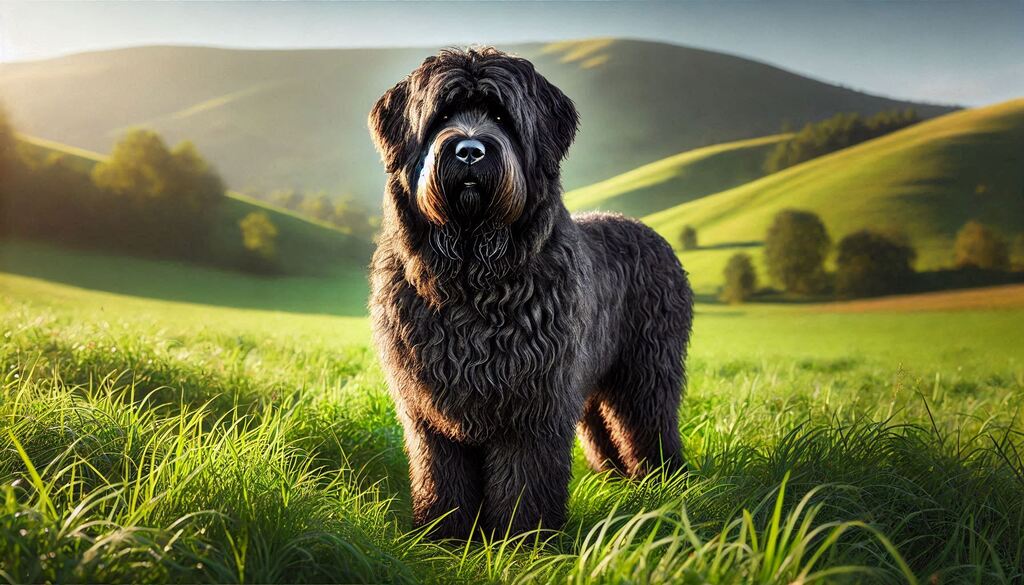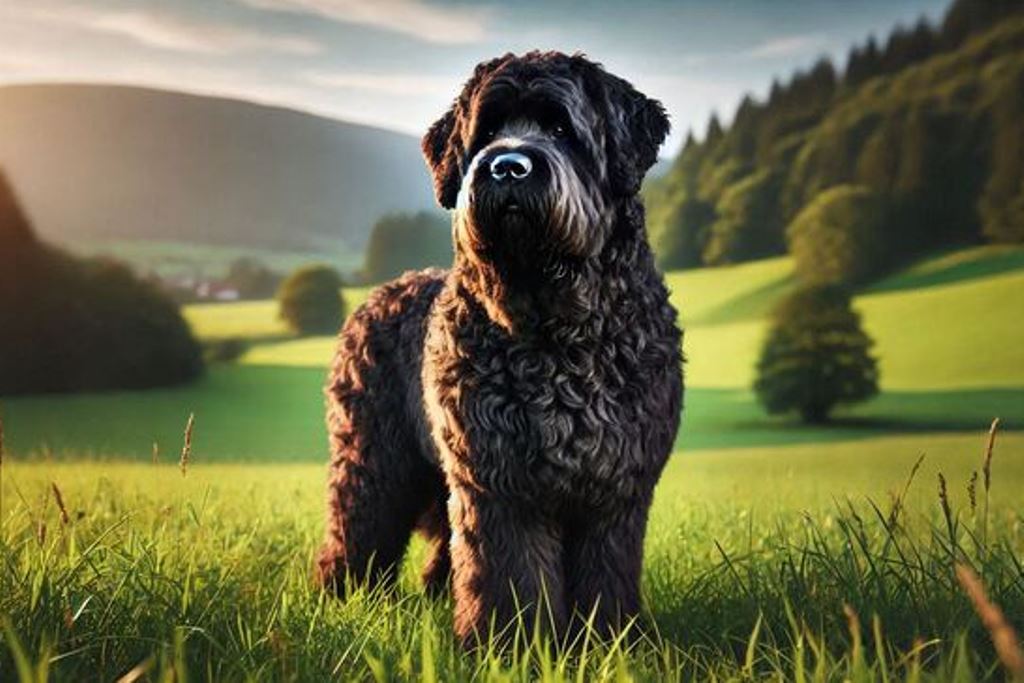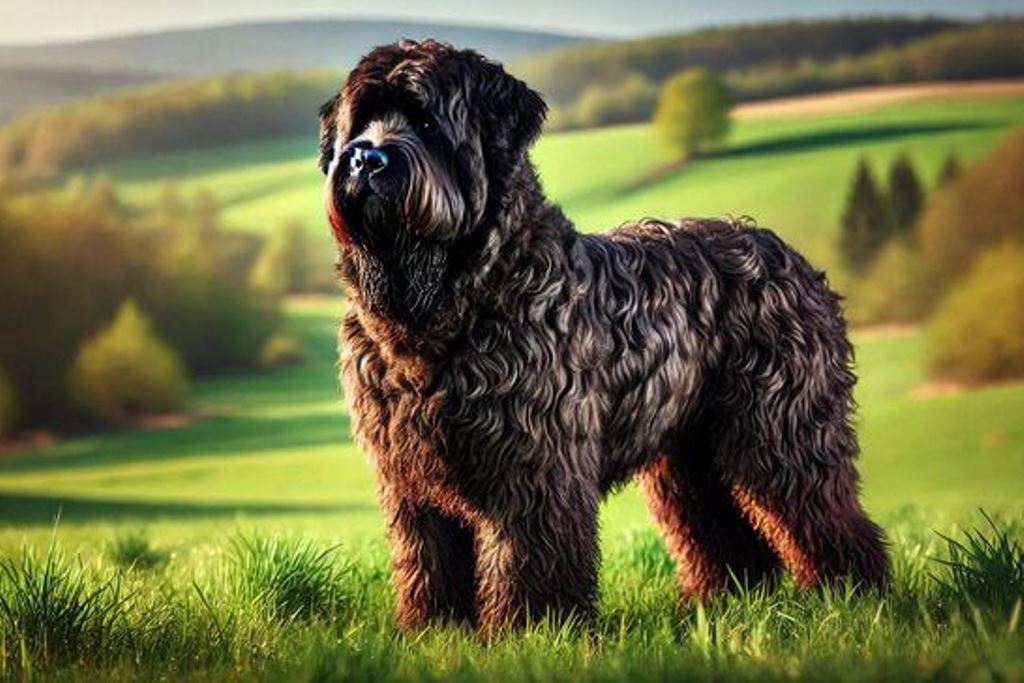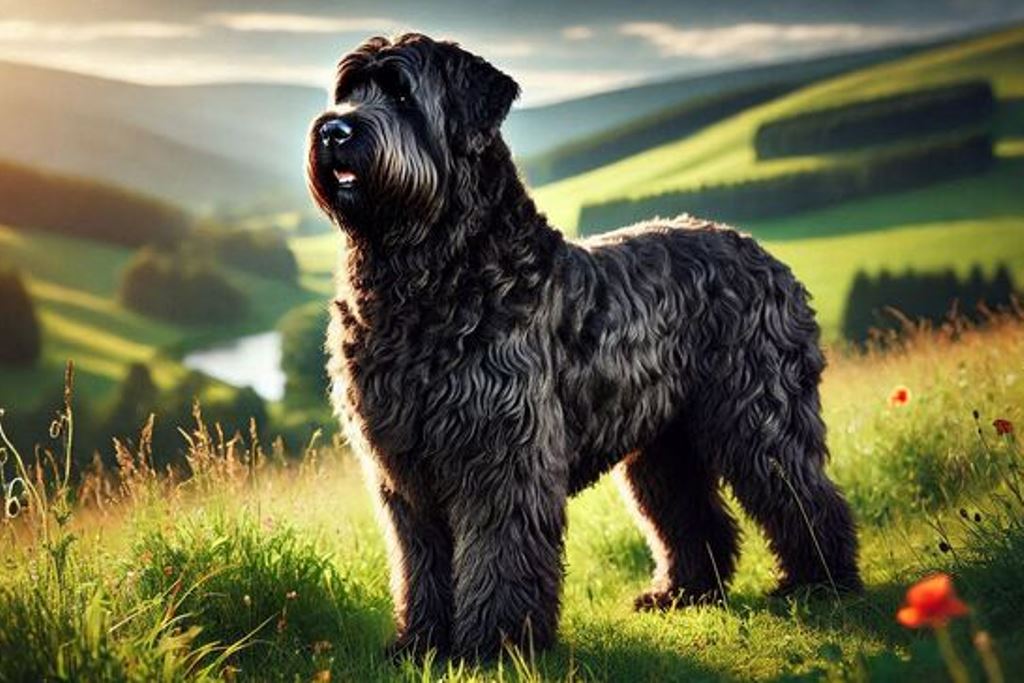
Features of the Flanders Shepherd Dog Breed
The Flanders Mountain Dog breed is very old and its origin is not very certain. There are different currents of thought regarding the origin of this breed. Its standards were set very late, in 1937, but before that, in fact much earlier, it had been used since time immemorial in the rough work of cattle driving.
The most hostile climate and hard work have contributed to giving it that astonishing rusticity through natural selection, to which man has then succeeded in achieving homogeneity in type.
Its origins, as its name implies, are in Flanders, both Belgian and French, and each of the two countries claims paternity. So after years of contention, a compromise was reached to consider it Franco-Belgian.
Its ancestors are not very certain; some point to the Languedoc shepherd as the ancestor of the Flanders Shepherd, which is an unrecognised French breed that was brought to the Flanders area by Spanish troops, later there were also attempts to mate it with the Brie shepherd.
According to others, it is a cross between a hard-coated griffon and a Beauceron shepherd dog. And yet for the Belgians, it is descended from the Roulers bovine.
According to Professor Reul (a famous cynophile whose work on Belgian dog breeds, written at the end of the last century, proved to be no less decisive than Paul Mégnin's work on French shepherd dogs), the Flanders Mountain Dog, like most European farm dogs and shepherds, is descended from the peatland dog, a wild animal that was gradually domesticated by man.
During the world wars, it played a very important role as it was often employed alongside the military. During the Second World War, the dog risked extinction because everyone was looking for it to be used as an auxiliary.
It was much sought after because it was a very hardy, robust dog that adapted to adverse situations and was very loyal. After the war, an attempt was made to achieve purity in this breed again by using the few survivors from military use and trying to encourage mating and reproduction.
Today, the Flanders Mountain Dog is mainly used as a guard dog, defence dog and police auxiliary, but it has also become a companion dog to all intents and purposes. It is also used extensively for agility dogs and as a competition dog for utility and defence disciplines.
Character of the Flanders Mountain Dog breed

The Flanders Mountain Shepherd is a reliable dog, very calm, well-balanced and endowed with marked intelligence and sensitivity. It is very attached to its owner, to whom it shows a strong attachment, and its calm and calm character makes it an excellent house and family dog towards whom it is always very affectionate. If properly socialised when young, he willingly accepts other dogs and pets such as cats. It adapts very well and easily to various situations and contexts.
It is very intelligent and, being also very obedient, can understand without any problems what its owner wants it to understand. It is an excellent guard dog and defence dog, in fact it will defend its master, if it feels him in danger, even before receiving an order. It is excellent as a guard dog for isolated houses.
In fact, he loves being in the open air and running freely. As a medium-sized dog, he has a great need for movement. He hates being bored and sitting still, so he is not suitable for the elderly or sedentary.
Totally devoted to its owner, it has no problem adapting to life at home and in the family, making it a good companion dog. With strangers it is always a little wary, so any new person who comes to the house must be accompanied by the owner or family members, only then will it be accepted.
It is often used as a guide for the blind, as a police and anti-drug dog, as it has an exceptional sense of smell, and above all as a herding dog, as it is an excellent worker with special skills in leading livestock from the farm to the pasture and bringing them home in the evening.
Appearance of the Flanders Mountain Dog breed

The Flanders Mountain Dog is a medium to large dog. Females tend to be smaller, while males are around 68 centimetres tall at the withers and weigh around 40 kilograms.
It has a powerful musculature and a well-proportioned body. It is morphologically classified as a wolfhound. It is a massive-looking dog and its coat accentuates its image of strength. It has excellent musculature, which allows it great speed of movement. Its limbs are strong. The tail is generally cut off in the first weeks of life leaving 2 or 3 vertebrae. If it is present it is not very long and is curled upwards.
The head is robust and massive with a broad, strong muzzle full of shaggy hair; it also has a beard and thick moustache. The eyes are almost completely hidden by all the hair on the muzzle and can be very dark in colour, usually darker than the coat, and are slightly oval and set horizontally. The ears, if cropped, are triangular, well straight, sticking up high and very mobile; if undamaged they are triangular carried forward in line with the skull and fall on the cheeks.
The coat is very thick and rough to the touch. It also has an important undercoat that makes it able to tolerate even low temperatures. The coat is always slightly shaggy, on the head it is rather short, beard and moustache are very thick, on the other parts of the body it is about 6 centimetres long. The colours are generally fawn or grey, sometimes tigerish or with anthracite-grey stripes, sometimes even completely black.
Care and health of the Flanders Mountain Dog breed

The health of the Flanders Mountain Dog is very good, however, being a medium to large dog, it can suffer from hereditary disorders such as hip dysplasia, laryngeal paralysis, which can cause noisy breathing and difficulty breathing, and in old age it can suffer from cataracts. Its average life expectancy is about 12 years.
The coat of the Flanders Mountain Dog is dry, so its coat should almost never be washed but only brushed. A bath once a year is usually indicated for this breed in order not to damage the coat and undercoat, while a brushing with a straight-toothed brush should be done at least once a week.
As far as nutrition is concerned, being a large dog, they have a large appetite and require a different balance of nutrients including minerals and vitamins than smaller dogs. They are also prone to stomach twisting, so it is good to feed them several times a day.






















